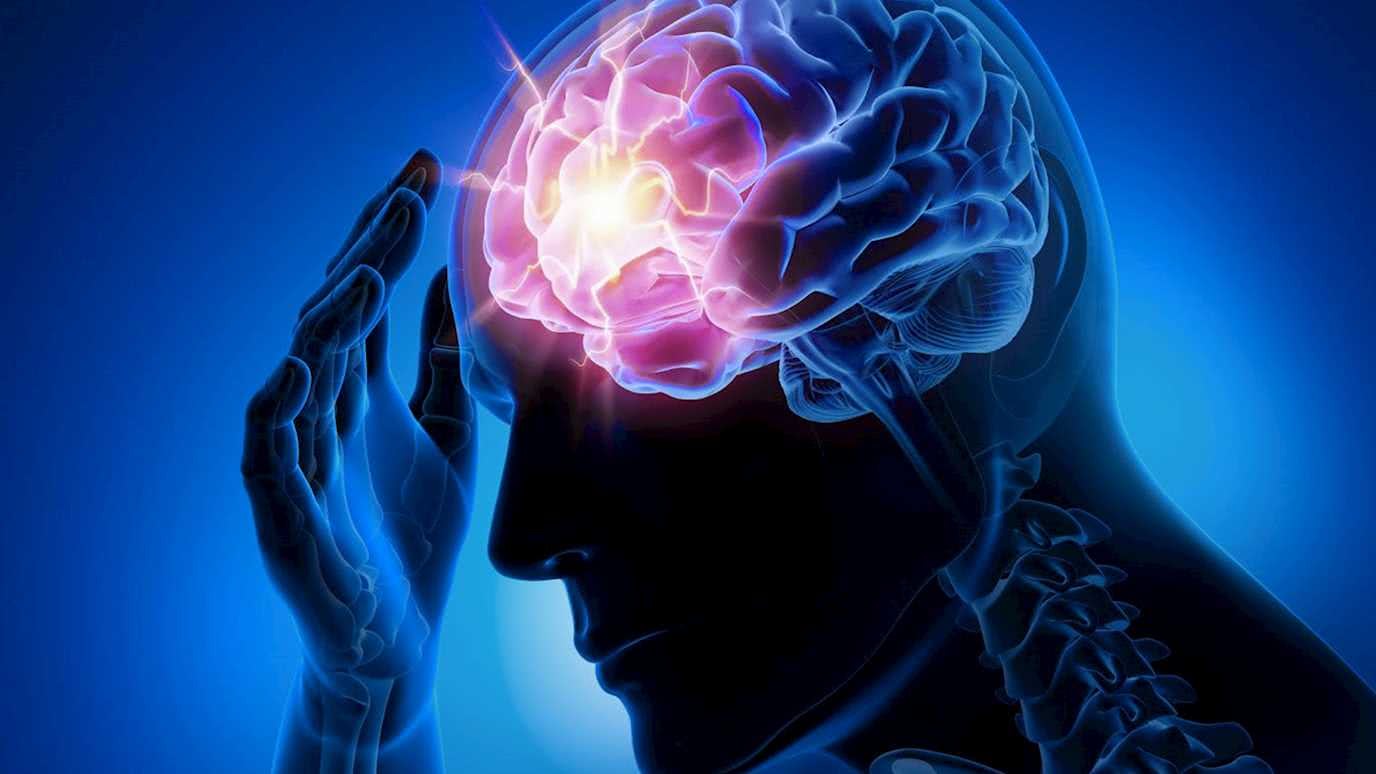Epilepsy is a neurological disorder with an increasing incidence in the older people population. Studies have found that NMN can reduce the intensity and frequency of seizures, comparable to the effects of anti-epileptic drugs, and improve cognitive and motor performance. NMN protects neurons and may be a new way to intervene in epilepsy.
Epilepsy is a very difficult neurological disease. In recent years, with the aging of our population, the incidence of cerebrovascular diseases, dementia and neurodegenerative diseases has increased, and the incidence of epilepsy in the older people population has shown a rising trend.
Epilepsy is also one of the most common diseases in neurology, and the risk of death of patients is 2 to 3 times that of the general population.
Previous studies have found that a lack of NAD+ is a major cause of a number of neurological disorders such as Parkinson’s disease, Alzheimer’s disease, and epilepsy. NMN supplier
Phase I results of a clinical study: By ingestion of NAD+ precursors, the level of NAD+ in the brain of patients with Parkinson’s disease can be increased, thus playing a role in protecting the nervous system and improving Parkinson’s disease.
It is also a neurological disease, if supplementing NMN improves the level of NAD+ in the brain to reduce the intensity of epilepsy patients, then it will be a great boon for epilepsy patients.
Recently, The latest study, “Nicotinamide mononucleotide alleviates seizures via modulating,” was published in the Journal of Neurochemistry In SIRT1-PGC-1α mediated mitochondrial fusion and fission,
the results showed that NMN supplementation significantly reduced the intensity and frequency of seizures in epileptic mice,
and the effect was comparable to that of the broad-spectrum antiepileptic sodium valproate.
It also improved the learning and memory ability of the epileptic mice, and enhanced the movement and desire to explore.
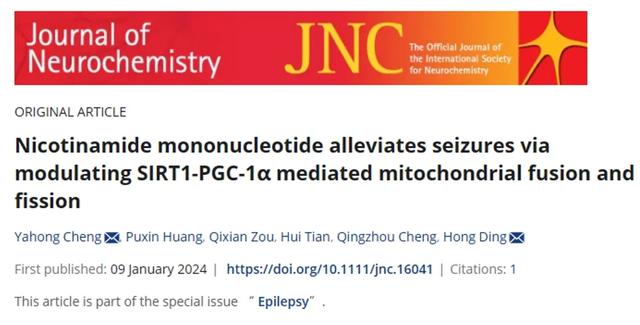
The experimental mice were randomly divided into 5 groups: negative control group, epilepsy model group, low-dose NMN group (NMN-L group),
medium-dose NMN group (NMN-M group), high-dose NMN group (NMN-H group) and the broad-spectrum antiepileptic drug sodium valproate as a positive control group (VPA group), with 10 mice in each group.
1. The antiepileptic effect of NMN is equivalent to that of antiepileptic drugs
The researchers first observed the seizure grade and seizure latency of each group of mice. With the increase of time, the seizure intensity of mice in the epilepsy model group also increased.
Medium dose NMN intervention has significantly reduced the intensity of seizures in mice, and its effect is comparable to or even better than the broad-spectrum antiepileptic valproate in the positive group. Moreover, medium and high dose NMN intervention also showed varying degrees of prolongation in clonic and tonic-clonic seizure latency.
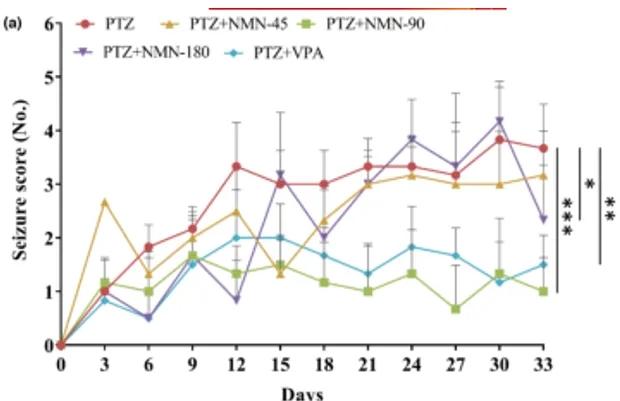


2. NMN restores cognitive ability and activity ability
In the evaluation of spatial learning and memory ability of chronic epileptic animals, compared with the control group,
the escape latency of epileptic mice in the localization and navigation stage was significantly prolonged,
and the escape latency of mice was significantly shortened after NMN supplementation.
These results suggest that the cognitive ability of mice tends to decline with prolonged seizure duration, and NMN can effectively restore cognitive ability.
The effects of NMN on motor activity and exploration behavior of mice were studied. In the field experiment, the epilepsy group of mice basically moved around,
not willing to move long distances, and the medium dose of Nicotinamide Mononucleotide made the mice more willing to move, walk further, and eat more.
Another point is that epileptic mice generally do not want to stay in the central area, preferring to stay in the corner;
After the intervention of Nicotinamide Mononucleotide, the residence time of 90 and 180 mg/kg mice in the central area increased.
These results suggest that NMN can effectively improve the exploration behavior and increase the motor activity of mice.
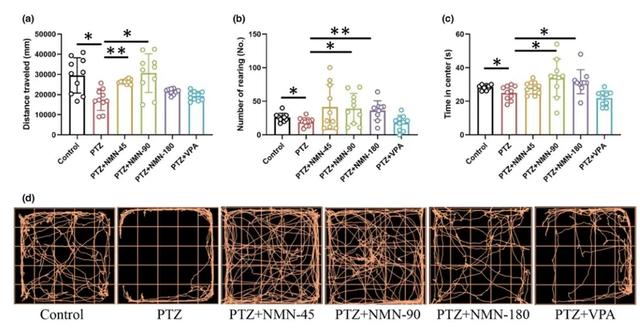
3. NMN can effectively protect neurons
The antiepileptic effect and behavioral improvement of Nicotinamide Mononucleotide depend on its neuroprotective effect.
The display of brain cell morphology in the section of brain tissue found that the cell morphology and structure of the control group were normal,
and the gap was arranged neatly, while the cells in the epilepsy group were contracted and deformed,
and the cell arrangement was sparse, and the cell structure was unclear.
In contrast, hippocampal neurons in the Nicotinamide Mononucleotide group were plump, round and tightly arranged, similar to those in the control group.
Compared with the control group of Kunming mice,
the number of hippocampus neurons in epilepsy group decreased, and the number of neurons increased after NMN intervention.
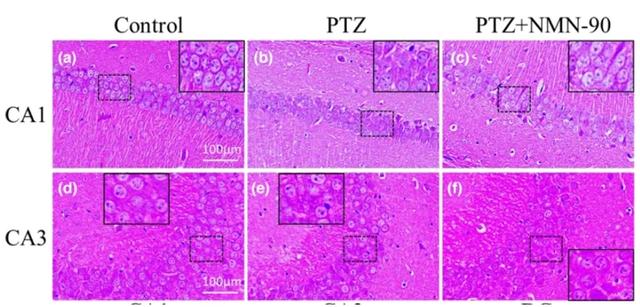
The data from this study showed that Nicotinamide Mononucleotide reduced the severity of seizures and improved cognitive function. Supplementing NMN may be a new method to intervene in epilepsy induced cognitive and behavioral disorders.
References:
- 1. Brage Brakedal , Christian Dölle , Frank Riemer ,et.al.The NADPARK study: A randomized phase I trial of nicotinamide riboside supplementation in Parkinson’s disease. Cell Metab. 2022 Mar 1;34(3):396-407.e6. doi: 10.1016/j.cmet.2022.02.001. PMID: 35235774.
- 2. Yahong Cheng , Puxin Huang , Qixian Zou, et.al. Nicotinamide mononucleotide alleviates seizures via modulating SIRT1-PGC-1α mediated mitochondrial fusion and fission. J Neurochem. 2024 Jan 9. doi: 10.1111/jnc.16041. PMID: 38194959.

